In the wake of Wednesday’s national accounts shocker, I have once again deflated three measures of the domestic economy, as provided in the September quarter national accounts, by the ABS’ population data, in order to ascertain the underlying strength of the domestic economy in real per capita trend terms.
The three measures chosen are:
- National Disposable Income (NDI), which is “considered a good measure of progress for living standards because it is an indicator of Australians’ capacity to purchase goods and services for consumption” (see ABS explanation here).
- Gross national expenditure (GNE), which is “the total expenditure within a given period by Australian residents on final goods and services (i.e. excluding goods and services used up during the period in the process of production). It is equivalent to gross domestic product plus imports of goods and services less exports of goods and services”.
- Domestic final demand (DFD), which is the sum of “government final consumption expenditure, household final consumption expenditure, private gross fixed capital formation and the gross fixed capital formation of public corporations and general government”.
First, let’s consider real per capita NDI. As shown below, this measure continued to rebounded, rising by 0.6% in the September quarter in trend terms to be up by 1.9% over the year. However, real per capita NDI has fallen by 3.6% since December 2011, suggesting falling living standards:
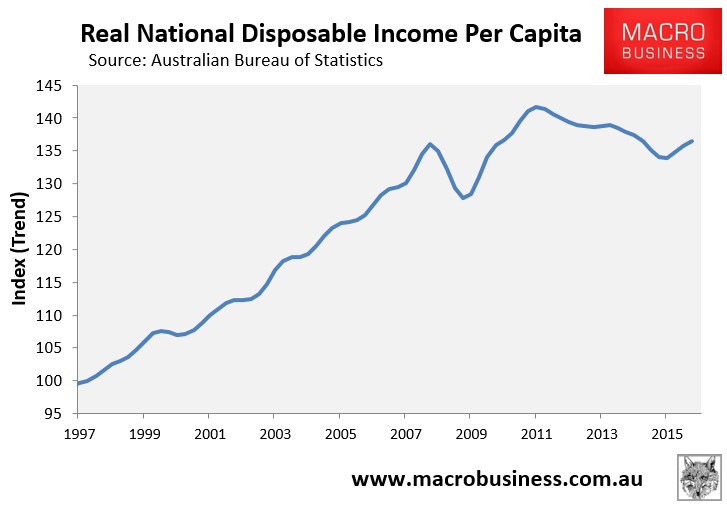
Per capita NDI is also just 0.4% higher than September 2008 – that’s eight years with virtually no growth!
The divergence between per capita NDI and GDP is particularly stark:
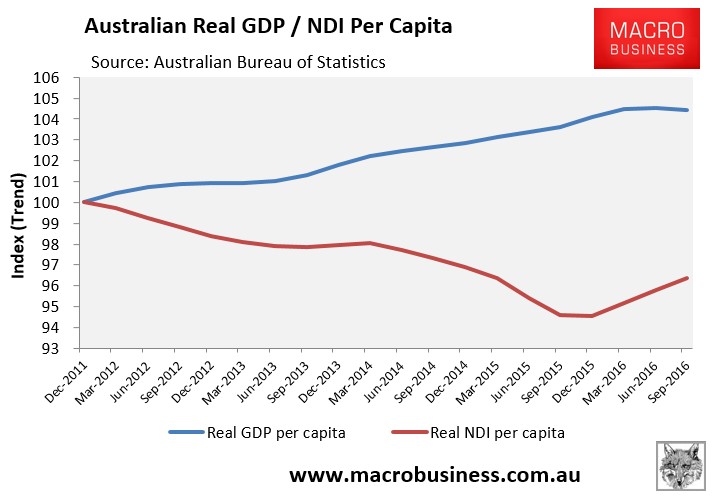
Since December 2011, real GDP per capita has risen by 4.4% compared with a 3.6% decline in real per capita NDI.
An examination of the national accounts data also shows that real per capita NDI since the onset of the GFC has grown far more slowly than at the same time after the mid-1970s, early-1980s and early-1990s recessions. That is, real per capita NDI has risen just 0.4% since September 2008 versus 4.5% growth at the same point after the mid-1970s recession, 11.1% growth at the same point after the early-1980s recession, and 12.9% growth at the same point after the early-1990s recession:
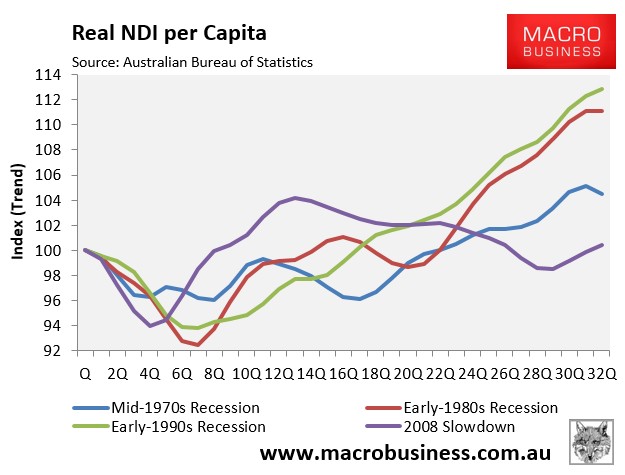
Similar trends are evident with GNE and DFD, which have also fallen since June 2012, albeit less severely:
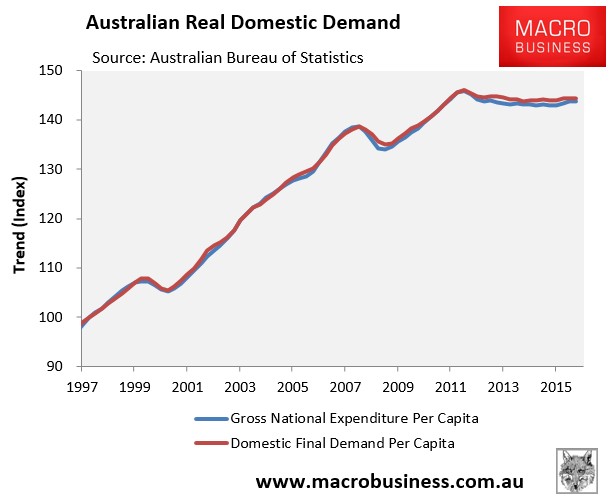
Since June 2012, per capita GNE has fallen by 1.5%, whereas per capita DFD has fallen by 1.1%.
The big expansion in commodity export volumes that has occurred in recent years has supported headline GDP but hidden the fact that the domestic economy remains weak, propped-up by mass immigration.
Sadly, aggregate GDP is the measure that wrongly receives the most attention from economists, commentators and politicians.
But once we subtract population growth, Australia’s per capita GDP growth since the GFC has also been far worse than the 1970s, 1980s and 1990s recessions:
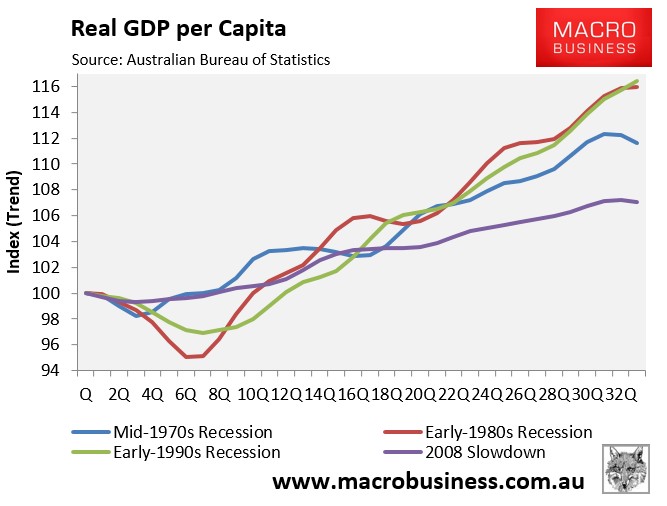
33 quarters after the onset of the GFC, GDP per capita has risen by only 7.1%. This compares to 11.6% growth after the same point after the mid-1970s recession, 16.0% growth after the early-1980s recession, and 16.5% growth at the same point after the early-1990s recession.
The gaps are also likely to widen further as the once-in-a-century mining investment boom continues to unwind, the boom in housing construction begins to reverse (probably late next year), and the car industry closes by late 2017, offset only partly by rising export volumes.
Those headwinds, combined with minimal growth in per capita income and spending, is why Australia is experiencing its own “lost decade”.

